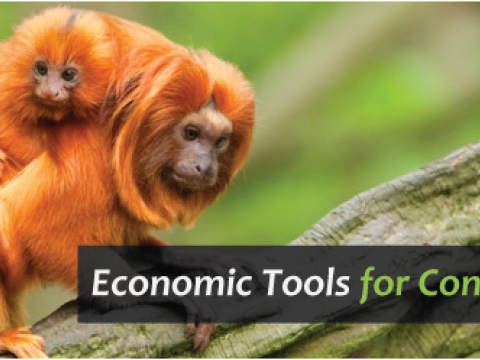Diary of a course graduate: Anita Escobedo
I am pleased to write an update on the activities and conservation initiatives that I have been working on after attending Conservation Strategy Fund’s 2012 course, Economic Tools for Conservation, in Stanford, CA.
Since October, I have been participating in a project called "Identification of Priority Areas for Conservation and Ecosystem Services" (with help from The Nature Conservancy and Geomatics Consultants). We are a multidisciplinary group and I work as a local coordinator. I compile information on the selection of targets (plants, mammals, birds, amphibians and reptiles), threatened areas, and conservation goals, among others. In terms of applied economic concepts acquired, I have used what I have learned in the following different ways:
First, the project was created as a technical instrument to determine which areas should be conservation priorities, because there is a proposed project to implement a national electric transmission line from one region to another (our study area is 23 million hectares and covers the entire Amazon region of Loreto, Peru). In our portfolio of priority areas for conservation, it is recognized that various types of areas and ecosystem services would be affected by the project.
Second, on February 17th of this year came a "Zero Net Loss" decree, requiring environmental damage compensation. In other words, if an ecosystem is affected by the transmission line, there must be compensation in a similar ecosystem, and this should take into account the level of endemism, irreplaceability, and landscape context of that ecosystem.
Third, we are considering the following question: "Which is better, to maintain or restore?" From my colleagues' and my point of view, it is recommended to maintain than restore. (We believe this because, in a biodiverse rainforest, we have not yet seen a particularly successful example of restoration).
In conclusion, we have the task of creating alternatives for the transmission line route, prioritizing those that damage either a smaller quantity of sensitive ecosystems or ecosystems that are inherently less sensitive, and determining where there is the greatest opportunity to compensate for the affected ecosystems. This study represented the first of its kind to apply the new compensation law issued by the Peruvian Ministry of Environment (taking into account both environmental and economic factors), as well as the first to undertake a mapping of regional priority conservation areas. The results of this study will be indispensable for any organization intending to develop infrastructure in the Loreto-Peru Region.
As a second job, I just won the bid to participate as a biodiversity specialist in a project called "Strengthening Local Capacities for Productive Conservation of Biodiversity Resources Among the Populations of the 15 Communities in the Lower Ucayara-Yarapa River Basin, Loreto Peru"(led by the Peruvian Amazon Research Institute). Since February of this year, I have contributed to various activities aimed at sensitizing local people, guiding proper management of their natural resources, recovering resources that have been decimated, and promoting socio-economic interest within a value chain of products offered.
So far, I have helped consolidate and manage groups of palm trees and fish, and I have visited and geo-referenced areas of high resource use. By 2014, I hope to have approved management plans not only by locals but also by the ministry responsible for these issues, and find a more stable market and fair price for the products.
Also, we are encouraging the planting of native species and those of economic-interest (such as cedar, mahogany, and kapok) in both farms and back in forests. The idea is to help conserve these species, which local people have in their gardens or timber use areas, so they can focus on long-term, sustainable management.
Another activity that I have contributed to with the help of the tools that I learned with CSF, is my work on improving the production within a group of craft women. I have been conducting market research studies regarding sustainable management as well as eco-tourism. These women have been participating in the restoration of palm to be used for handicrafts. The presence of tourists in the area of the Yarapa River motivates 1) selling crafts, 2) “Recovery Demonstration Areas” of palms used in the manufacturing of handicrafts, 3) butterfly vivariums promoting awareness and conservation. Check out their Facebook account for photos and updates on their activities.
I am so grateful to the San Francisco Zoo for providing me with the opportunity to attend CSF’s Economic Tools for Conservation through their generous scholarship. In my conservation activities, I have utilized the knowledge acquired in the course as well as changed the factors I consider when making decisions. I hope that the SF Zoo will continue providing new funding opportunities for professionals involved in the Economic Tools for Conservation course, because it changes our vision, strengthens our opinions, and provides crucial knowledge on how to act on the issues of conservation and social development.
- Log in to post comments

